On my recent trip, I saw a different Palestine. This one has international software firms, promising young musicians, optimistic university students, and great ice cream. But it’s still occupied.
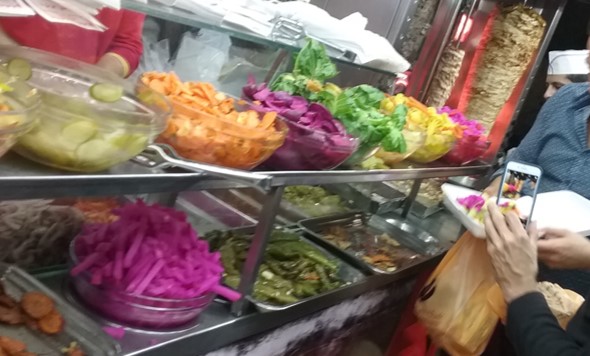
Late-night shawarma in Ramallah. Photo: J. Quirk
With the mysterious travels of Lebanon’s prime minister, new risks of conflict between Iran and Saudi Arabia or Israel, and internal struggles among competing Palestinian factions, the occupied territories are drawing global attention again.
If you ask Americans what they know about Palestine, you might hear about the Munich Olympics, hijacking planes, bus bombings in Israel, or rock throwing. They might say Yasser Arafat walked away from President Clinton’s peace deal in 2000, or even that they thought there was cheering on 9-11.
But I joined a small group organized by a diaspora society, the American Federation of Ramallah Palestine, to see Palestinian culture. I had field experience in Bosnia, on the U.S.-Mexico border, and in Iraqi Kurdistan – but not in the Holy Land.
We traveled throughout the West Bank, and visited people at technology, construction, and food processing firms. We met municipal officials working to increase residents’ access to e-services. In traditional souks we met the sellers of spices and vegetables of every kind, as well as iPhones and Haagen-Dazs. We met the Greek Orthodox priest at a church where Jesus asked a Samaritan woman for a drink of water. We saw people in their olive groves on the first day of the harvest.
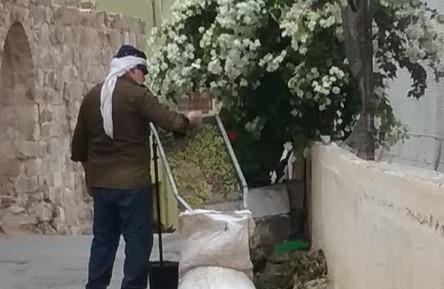
The first day of harvest, near Nablus. Photo: J. Quirk
In this Other Palestine we met university students studying nursing, education, and business. We saw a film student’s premier, and two members of the New York Philharmonic teaching teenagers how to be composers. We joined young people out for late-night shawarma, and saw ordinary people doing ordinary tasks: going to work, driving too fast, shopping for dinner, checking Facebook.
The quad at Bethlehem University is practically an arboretum, an oasis for learning and growing, out of sight of the nearby walls and barbed wire. In a village near Nablus, we met three young women doing pottery by traditional methods – little Christmas trees, olive trays, candlesticks.
Beyond the markets, restaurants, and holy sites, though, this is still Occupied Palestine. The Jewish people have suffered from centuries of anti-Semitism, the Holocaust, and recent conflicts and attacks. But Palestinians ask, For how long can occupation – with land grabs, walls, checkpoints, travel restrictions – be the answer?
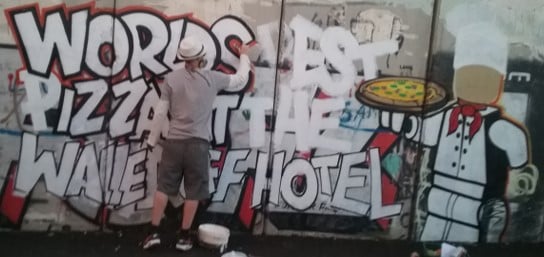
An ad for a hotel restaurant on The Wall in Bethlehem. Photo: J. Quirk
Ordinary Palestinians say they understand the security goals. But they feel these policies are applied with irrational, random vengeance against the innocent. They wonder when students can’t get to university, fathers can’t get to work, people have to drive an extra hour to go a few kilometers, or young people get strip-searched (an account different people attested to me was real): “What is Israel really hoping to accomplish?” Without a permit, which can be difficult to acquire, Palestinians can be restricted from leaving the West Bank at all.
“The Settlements” are new-housing developments sometimes carved out of agricultural land Palestinians rely on for their survival. In the case of Hebron, though, one urban settlement extends to and essentially over the city’s old market. Settlers threw so much trash upon the people below that chain-link-fence netting had to be secured over the market, just meters from the tomb of Abraham. On our last day, we heard that olive harvests near Nablus and Ramallah had been seized by settlers: simple theft of a year’s work. I wondered, What Would Abraham Do?
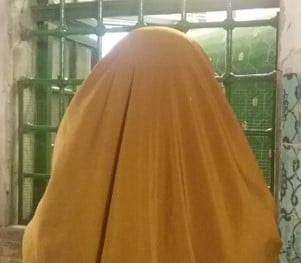
A woman prays at the tomb of Sarah in Hebron. Photo: J. Quirk
To be clear: I didn’t see the world from the Israeli perspective, I didn’t speak with Jewish mothers who lost their children during the Intifada, I don’t have anyone from my family who was lost in the Holocaust. But the Palestinians I met see U.S. military and diplomatic support for Israel, and they asked me: How is the status quo justifiable?
In the Other Palestine, I saw things that reminded me of the difficulties of postwar Bosnia, Mexican migrants, and independence-minded Iraqi Kurds. A new art gallery in Ramallah illustrates decades of resistance to occupation, and I anticipated decades more.
But the graffiti on the Palestinian side of The Wall – peace doves, Trump satire, pizza ads – chronicles desperate, ironic, yet hopeful Palestinians. It was fascinating that so many people were not pessimistic.
They told me to look at Northern Ireland, South Africa, and the Berlin Wall.
None of these is just like Israel-Palestine, they agreed. But all of them were long considered unsolvable. Each still has problems today, but overall the situations are much better. Life under occupation has imposed many restrictions on Palestinians, but not vanquished all hope. Maybe Americans should reconsider what short-term and long-term improvements are possible between the Israelis and Palestinians, and recommit ourselves to working towards them, for the benefit of all of us.
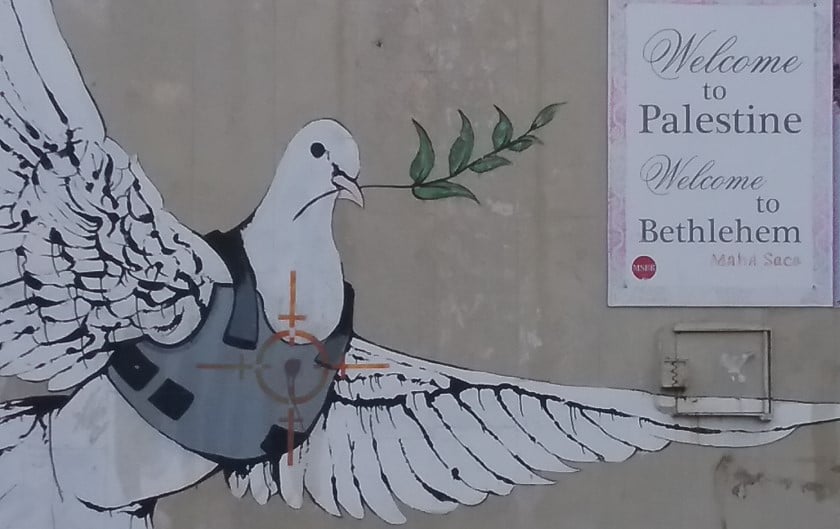
The Wall, in Bethlehem. Photo: J. Quirk
An earlier version of this post appeared in the Times of Israel.